George Washington Slept Here

Brief Synopsis
Cast & Crew
William Keighley
Jack Benny
Ann Sheridan
Charles Coburn
Percy Kilbride
Hattie Mcdaniel
Film Details
Technical Specs

Synopsis
After Bill and Connie Fuller are forced to move from their New York City apartment because their small dog has damaged the carpets, antique-loving Connie secretly purchases a dilapidated farmhouse in which George Washington supposedly slept. Soon after, Connie takes Bill on a drive in the Pennsylvania countryside, hoping that he will fall in love with the place before she breaks the news that they already own it. As they drive, Connie points out the rich history of the area, but to her dismay, Bill hates everything about the house. Added to the fact that there are rotten floors, no bathroom, no water and no roof are trains that depart at odd hours making commuting almost impossible. Despite Bill's objections, the Fullers, together with Connie's young sister Madge, move into the house and begin renovations with the questionable help of local handyman Mr. Kimber. While Kimber continues to dig for water, the Fullers learn that, contrary to the legend, Benedict Arnold, not George Washington, slept in their house. One rainy day, when leaks spring up all through the house, married actors Rena Leslie and Clayton Evans stop by to get out of the rain, and the impressionable Madge is quite taken by Clayton. By the end of the summer, there is still no water, Raymond, Connie's bratty nephew, has come to live with them, and they face a visit from Connie's wealthy uncle Stanley. Madge has become enamored with Clayton and imagines eloping with him, and Bill believes that Connie is having an affair with local antique dealer Jeff Douglas. Faced with Bill's accusations, Connie admits that she has been planning a surprise with Jeff. The surprise is the original map of the area which reveals that they own the working well and the access road that have been claimed by their unpleasant neighbor Prescott. When Bill gleefully tells this news to Prescott, he responds by pointing out that the Fullers are facing foreclosure and that he intends to buy their newly remodeled house and land when that happens. Desperate to save their home, Bill and Connie ask Stanley for the necessary money, but he turns them down, confessing that he went broke in 1929 and has been lying about his fortune in order to ensure that his relatives will treat him well. Stanley tries to help Connie anyway by threatening Prescott with a lawsuit over the boundaries of the property, but when Stanley's real financial state is inadvertently exposed, Prescott is emboldened to stand firm. Things look hopeless, but then the Fuller's small dog finds an old letter in a boot that Kimber discovered while digging for a well. It is a letter from George Washington which is valuable enough to pay the mortgage, thus saving the house just in time for the arrival of a swarm of seventeen-year locusts.

Director

William Keighley
Cast

Jack Benny
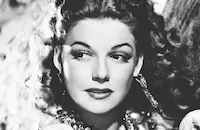
Ann Sheridan

Charles Coburn
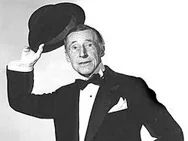
Percy Kilbride

Hattie Mcdaniel
William Tracy

Joyce Reynolds
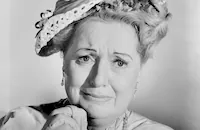
Lee Patrick

Charles Dingle
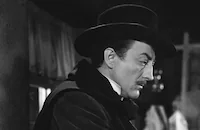
John Emery
Douglas Croft
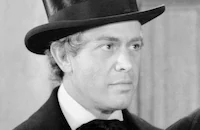
Harvey Stephens
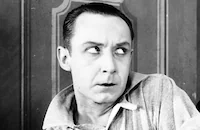
Franklin Pangborn
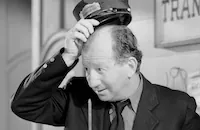
Hank Mann
Cliff Saum
Sol Gorss
Glen Cavender
Dudley Dickerson

Jack Mower
Gertrude Carr
Chester Clute
Isabel Withers
Crew
Ralph Dawson
Adolph Deutsch
Leo F. Forbstein
Everett Freeman
Ernie Haller
Frank Heath
Mark-lee Kirk
Orry-kelly
Max Parker
Casey Roberts
Don Siegel
Jerry Wald
Perc Westmore

Photo Collections
Videos
Movie Clip



Trailer
Hosted Intro
Film Details
Technical Specs

Award Nominations
Best Art Direction
Articles
George Washington Slept Here
When producer Jerry Wald suggested the screen adaptation to Benny, the star went to see the Broadway production before making up his mind. Two things about the production struck him. First, he was bowled over by Percy Kilbride's deadpan comic performance as the handyman who keeps turning up with expensive problems to be fixed. But he was also dismayed to realize that the husband was essentially the show's straight man. As written, he was a gentle soul so in love with antiques that he moves his family into the broken-down mansion, triggering a series of comic one-liners and tantrums from his wife. When he explained his problems with the show to Wald, the producer suggested the simplest of solutions -- he simply had the writers reverse the husband and wife roles so that the wife buys the house and the husband reacts comically to it. All it really required was changing a few pronouns in the dialogue.
Benny was happy to accept and welcomed the chance to co-star with "Oomph Girl" Ann Sheridan, who was cast after Olivia de Havilland was originally announced for the role. But he had his heart set on working with Kilbride. On this matter, studio head Jack L. Warner disagreed. For one thing, he had plenty of character actors under contract to play roles just like that. For another, he thought Kilbride was too funny and would steal the film from the stars. Benny had no problem with that and even pointed out that his radio series was filled with scene-stealing performers -- including Eddie "Rochester" Anderson, Mel Blanc, Dennis Day, Mary Livingstone (Mrs. Benny) and Phil Harris -- who often upstaged him. When Warner still wasn't interested, Benny offered to pay for Kilbride's screen test. Warner finally agreed to the test, and all Benny had to do was appear with him.
That's when the trouble started. Kilbride was as funny on film as he had been in the theatre, so funny that Benny couldn't get through a scene with him without cracking up. Finally, the studio pulled Benny from the tests and had Kilbride test with Sheridan, who had the same problem. Even bringing in the picture's director, William Keighley, didn't solve the problem, but at least it convinced Keighley that Kilbride was the best choice for the role.
Once shooting started, Benny still had trouble keeping a straight face whenever Kilbride and he shared the screen. Finally, he had to stay up all night before shooting those scenes so that he would be too tired to laugh.
Something else that may have been keeping Benny up was his off-screen relationship with Sheridan. Accounts differ, but all agree that he was clearly interested in the "Oomph Girl." Some biographers insist the relationship was one-sided, and that she resisted all his advances. Benny's wife, however, was convinced that Sheridan was going after the comic, looking for comfort from her failing marriage to actor George Brent. Knowing of her own husband's wandering eye, Livingstone invited Sheridan to a party, then found a private moment to tell her "Miss Sheridan, I don't know whether you like Jack, or he likes you... But I wanted to remind you of something. Jack wouldn't give my little finger for your whole body! Now, have a good time." (from the biography Jack Benny).
Warner's pulled out all the stops on George Washington Slept Here. To create the perfect broken-down mansion, the art direction team took the set from Arsenic and Old Lace (1944) and broke out walls, banisters and pieces of plaster, winning an Oscar® nomination for their creative demolition. The film itself won strong fan support, paving the way for further comic triumphs for Benny as a Warner Bros. star. It also gave Kilbride a new career. Although he had made two minor films in the '30s, it wasn't until he made George Washington Slept Here that he found his niche on-screen. He stayed in Hollywood to play minor roles until he found the next great role of his lifetime, Pa Kettle in The Egg and I (1947), and seven low-budget but very popular Ma & Pa Kettle comedies that followed and made him a household name.
Producer: Jerry Wald
Director: William Keighley
Screenplay: Everett Freeman, based on the play by George S. Kaufman and Moss Hart
Cinematography: Ernest Haller
Art Direction: Max Parker
Music: Adolph Deutsch
Cast: Jack Benny (Bill Fuller), Ann Sheridan (Connie Fuller), Charles Coburn (Uncle Stanley), Percy Kilbride (Mr. Kinsher), Hattie McDaniel (Hester), Joyce Reynolds (Madge), Lee Patrick (Rena Leslie), Charles Dingle (Mr. Prescott), John Emery (Clayton Evans), Franklin Pangborn (Mr. Gibney).
BW-92m. Closed captioning.
by Frank Miller

George Washington Slept Here
Quotes
Trivia
Notes
A New York Times article dated April 26, 1942 reports that in order to create the dilapidated Bucks County, PA farmhouse, demolition crews knocked out bannisters, rafters and plaster on the $8,000 set for the Warner Bros. film Arsenic and Old Lace (released in 1944 but filmed in 1941, ). The article goes on to list the differences between the play George Washington Slept Here and the film: In the film the lead characters are younger, the wife rather than the husband admires antiques, the couple's daughter becomes the wife's sister and she does not actually elope with the married actor. The article also reports that there was to be a dream sequence in which Ann Sheridan would appear as Martha Washington and Jack Benny would appear as George Washington.
Press releases included in the file on the film at the AMPAS Library announce that Philip G. and Julius J. Epstein were assigned to write the screenplay and that Olivia De Havilland was initially cast as Benny's wife. The National Screen Council voted George Washington Slept Here the best picture for the entire family for the month of December 1942. Max Parker, Mark-Lee Kirk and Casey Roberts were nominated for Best Art Direction-Interior Decoration in a Black and White film.
















